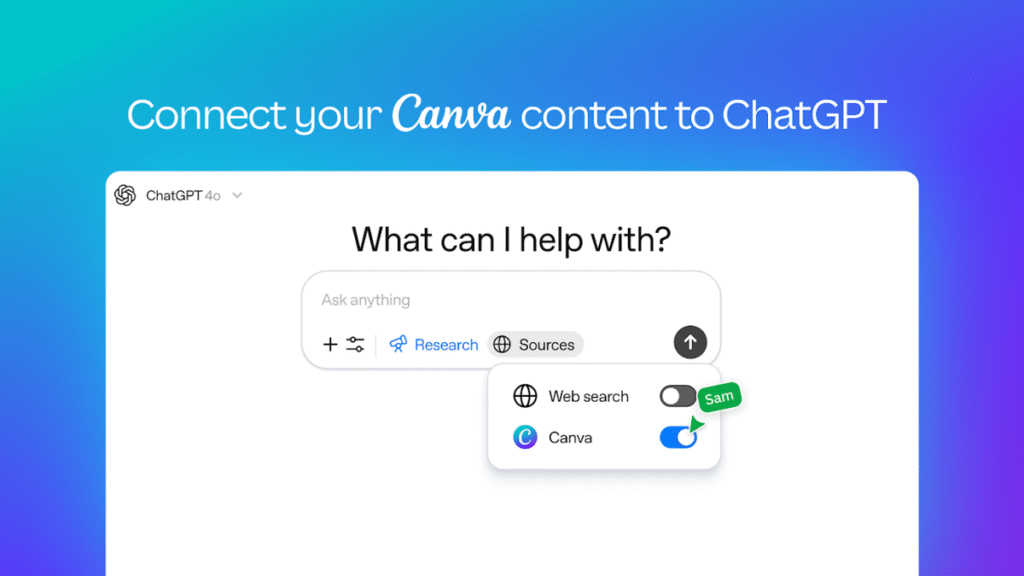In an era where creativity intertwines seamlessly with technology, the recent launch of Canva’s integration with ChatGPT promises to revolutionize workflows for small and medium-sized businesses (SMBs). The new design-focused connector and Model Context Protocol (MCP) Server offer innovative solutions that aim to streamline how users engage with artificial intelligence (AI) tools during the creative process. This integration will not only enhance productivity but also refine decision-making and foster collaboration in a way that empowers businesses to reach new heights.
The introduction of these features facilitates the use of Canva’s comprehensive design suite—encompassing Docs, Presentations, and various templates—without disrupting the flow of conversation with an AI assistant. For SMBs, this means being able to tap into a vast reservoir of design resources while simultaneously brainstorming ideas or drafting content. By integrating these tools, businesses can drastically cut down on the time and effort typically spent switching between different platforms or applications, thus creating a more efficient workflow.
Another critical aspect of this integration is the ability to retrieve, analyze, and build on previous work while leveraging OpenAI’s latest model. This is particularly beneficial for SMBs, which often face resource constraints and need to optimize every aspect of their operations. By allowing users to reference past designs and materials, companies can ensure consistency in branding and messaging while also freeing up time for more strategic activities. For example, marketers can quickly summarize campaign reports or reference launch plans, while sales professionals can generate tailored proposals that draw on prior customer feedback. As they streamline these tasks through AI, SMBs can maintain a good balance between operational efficiency and creative output.
The MCP Server is a game-changing addition, granting AI assistants access to a user’s Canva account and enabling real-time integration of design data and brand assets in content creation. This capability is especially valuable for SMBs that often juggle multiple projects and require coherence across all aspects of their branding. By incorporating accurate brand references and design templates directly into their workflows, these businesses can produce polished and professional-looking materials consistently.
Anwar Haneef, GM and Head of Ecosystem at Canva, highlights the shift toward simplifying complex workflows that involve AI. This evolution is particularly significant as SMBs frequently encounter challenges when it comes to managing creative processes that necessitate context or reference points. The goal here is to embed Canva directly into the AI tools that companies already use, allowing them to brainstorm, create, and publish content more quickly and efficiently. This philosophy encapsulates Canva’s mission to simplify the complexities often associated with creative tasks.
The practicality of the Canva-ChatGPT integration extends to educators as well. They can utilize the connector to refer back to previous lesson plans and curriculum content while creating new materials. This ability not only enhances the productivity of educators but also fosters a more engaging learning environment for students through high-quality design elements that can be produced rapidly.
Nate Gonzalez, Head of Business Products at OpenAI, echoes these sentiments, emphasizing the significance of context in driving better insights. By utilizing a deep research connector like the one Canva provides, businesses have the opportunity to derive quicker and more effective solutions, as AI can better understand the nuances of their unique contexts. This collaborative approach between Canva and OpenAI signifies a step forward in achieving a robust AI-enabled environment for diverse business landscapes.
Moreover, the MCP Server’s capabilities extend beyond Canva, allowing its features to be embedded into various other platforms, including Salesforce’s Agentforce. This means users can prompt their assistants to generate branded visuals, autofill charts with AI-driven insights, and export contextualized templates without the need to toggle between different software. By consolidating these functionalities, businesses can achieve higher levels of task optimization and collaboration, thereby generating a more dynamic work atmosphere.
Implementing these AI-driven strategies into daily operations enables SMBs to streamline workflows, reduce time spent on repetitive tasks, and ultimately enhance productivity. For instance, using AI to draft initial proposals based on previous customer engagements can save precious hours and allow teams to focus on closing deals rather than compiling data. This operational efficiency can also translate into significant returns on investment, as quicker decision-making typically leads to faster project completion, improved client satisfaction, and increased sales.
As more SMBs adopt these advanced tools, they will not only amplify their creative potential but also establish a more cohesive and agile business model. In a competitive landscape, those who leverage such innovations will be better positioned to differentiate themselves and drive growth.
FlowMind AI Insight: The integration of AI tools like Canva and ChatGPT marks a pivotal moment for SMBs striving for efficiency and creativity. By embracing these innovations, companies can transform their workflows and set a new standard for productivity while maintaining a strong focus on quality and brand integrity.
Original article: Read here
2025-06-27 07:00:00

